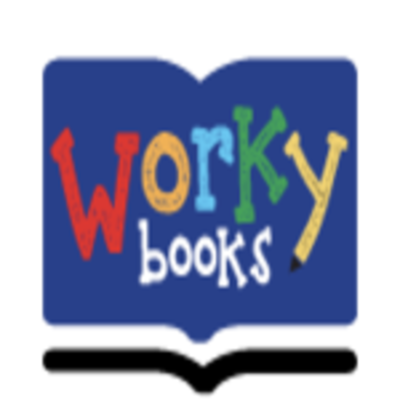Visualizing Fractions: Grade 2 Partitioning Shapes Worksheets Made Easy
 Workybooks
WorkybooksPartitioning shapes helps second graders dive into foundational math concepts by introducing fractions in a visual, hands-on way. From dividing circles to organizing rectangles, these fun and engaging activities help students understand parts of a whole and set the stage for future geometry and fraction lessons.
The Importance of Partitioning Skills in Grade 2
Partitioning builds a deep understanding of how shapes work and how they can be evenly split. It sharpens a child’s ability to reason spatially and lays the groundwork for recognizing and naming fractions.
Why students need to learn shape partitioning
Learning to partition shapes teaches:
Equal division
Basic fraction vocabulary like halves, thirds, and fourths
Critical thinking and visual analysis
Prep skills for multiplication and area
Halves, Thirds, and Fourths
Start with familiar terms like halves and build from there. The Halves, Thirds, or Fourths worksheet offers fun visual tasks where students divide common shapes into two, three, or four equal parts and label them.
A gentle start to early fractions
This activity sets a solid base for understanding fractional parts, encouraging children to see that every shape must be divided equally for fairness and mathematical accuracy.
Fun with Multiple Shapes: Beyond Rectangles
Once students understand the basics, they can apply the same ideas to other shapes. The Partitioning All Shapes worksheet challenges them to divide triangles, hexagons, and more into equal parts.
Why this matters
Using a variety of shapes helps children generalize the idea of partitioning beyond standard rectangles and circles, developing a flexible mindset for geometry.
Rectangle Partitioning and the Basics of Arrays
Rectangles are excellent tools for exploring equal parts and visual math patterns. In the Partitioning Rectangles worksheet, students practice splitting rectangles into equal-sized blocks.
Building skills through symmetry and counting
This teaches students how to organize space and recognize even distribution. It also links directly to the beginning concepts of multiplication.
Arrays: A Visual Path to Multiplication
Understanding rows and columns is essential for multiplication. With the Arrays Worksheets, learners build and analyze arrays made by partitioning shapes into equal groups.
Making connections to future math
Arrays turn partitioning practice into multiplication preparation. Kids learn repeated addition and grouping, leading to easier transitions in upper grades.
Dive Deeper: Identifying Partitioned Rectangles
Not every partition looks the same. Some worksheets like Partitioned Rectangles help students identify and describe shapes that have already been divided into equal parts.
A closer look at geometric relationships
This deepens awareness of symmetry and measurement, teaching children how to compare and interpret partitioned shapes without drawing them.
Circular Thinking: Partitioning Curved Shapes
Not all shapes have straight lines. The Partitioning Circle Shapes worksheet teaches students to slice circles into equal “pie” sections.
From pizzas to pies
Circles challenge kids to apply their partitioning skills differently, helping them understand that fractions aren’t just for boxes—they’re for everything!
Tips for Teachers and Parents
Adding creativity to partitioning practice turns learning into play.
Simple activities that make a difference
Use string or yarn to divide paper shapes
Practice with food—cut sandwiches or fruit into equal parts
Fold paper into halves, thirds, or fourths and color each part
Group real-world items into visual arrays
These activities make abstract math feel tangible and easy to understand.
Boost Learning with Workybooks Resources
Interactive and engaging, Workybooks’ worksheets offer bright visuals and clear instructions to guide students through each concept.
Visual learning that sticks
The worksheets make it easier for kids to:
Understand equal parts and fair sharing
Link geometry with everyday objects
Practice foundational math in a fun way
They can be printed or assigned online, giving you flexibility in the classroom or at home.
Conclusion:
Partitioning shapes helps Grade 2 students explore fractions visually and meaningfully. Whether they’re dividing a circle or creating arrays, kids develop confidence in handling numbers and shapes.
Start your journey today with Workybooks, and take learning further by using the Assignment for Kids tool to organize activities and track student growth.
Subscribe to my newsletter
Read articles from Workybooks directly inside your inbox. Subscribe to the newsletter, and don't miss out.
Written by
